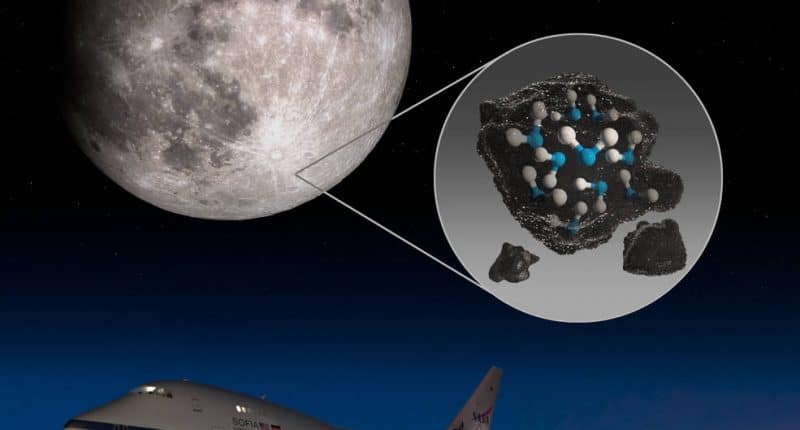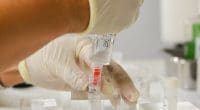NASA has made a landmark discovery as the space organization’s Stratospheric Observatory for Infrared Astronomy (SOFIA) has confirmed the presence of water on the sunlit surface of the Moon. NASA says the discovery indicates that water might be distributed across the lunar surface and not limited to the colder regions of the Moon.
Paul Hertz, director of the Astrophysics Division in the Science Mission Directorate at NASA said, “We had indications that H2O – the familiar water we know – might be present on the sunlit side of the Moon. Now we know it is there. This discovery challenges our understanding of the lunar surface and raises intriguing questions about resources relevant for deep space exploration.”
The Clavius Crater, one of the largest ones on the Moon visible from Earth, has been detected by SOFIA to contain water molecules (H2O). The Clavius Crater is located in the Moon’s southern hemisphere, which is the most sunlit part of the lunar surface. The data collected by SOFIA indicates that water is present in concentrations of 100 to 412 parts per million, which is almost equal to a 12-ounce bottle of water. This water concentration is stored in a cubic meter of soil spread across the Moon’s surface.
This is not the first time NASA has discovered water on the lunar surface. However, previous discoveries were limited to water in the form of ice in the colder and shadowed region of the Moon. NASA’s Lunar Crater Observation and Sensing Satellite was the first mission to confirm water ice permanently stored in shadowed craters around the Moon’s poles. Several other space missions by the organisation, as well as other space organizations such as ISRO have previously confirmed finding evidence of hydration in sunnier regions. However, these missions were unable to determine if it was H2O molecules or OH molecules.
Casey Honniball, a postdoctoral fellow at NASA said, “Prior to the SOFIA observations, we knew there was some kind of hydration. But we didn’t know how much, if any, was actually water molecules – like we drink every day – or something more like drain cleaner. Without a thick atmosphere, water on the sunlit lunar surface should just be lost to space. Yet somehow we’re seeing it. Something is generating the water, and something must be trapping it there.”
SOFIA is a joint project by NASA and the German Aerospace Center to build and run an airborne observatory. It houses a 106-inch diameter reflector telescope in an aircraft based on the Boeing 747SP wide-body aircraft. The SOFIA aircraft flies at an altitude of up to 45,000 feet to get rid of the water vapor in the Earth’s atmosphere and obtain a clearer view of space.
NASA claims that several factors could have come into effect to create water on the lunar surface. It said, ” Micrometeorites raining down on the lunar surface, carrying small amounts of water, could deposit the water on the lunar surface upon impact”. Another possibility that NASA states are that the Sun’s solar winds could have delivered hydrogen to the lunar surface and a chemical reaction of that hydrogen with the oxygen-rich minerals present on the Moon would have produced hydroxyl. The radiation from the bombardment of micrometeorites then transforms that hydroxyl into water.
NASA says that the follow-up flights of the SOFIA will now look for water in additional sunlit locations during different lunar phases to learn how the water is being produced, stored and moved across the Moon.
“Water is a valuable resource, for both scientific purposes and for use by our explorers. If we can use the resources at the Moon, then we can carry less water and more equipment to help enable new scientific discoveries,” said Jacob Bleacher, chief exploration scientist for NASA.





